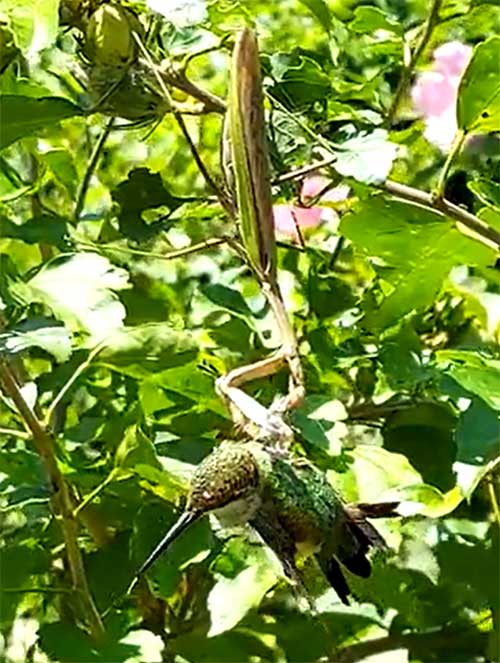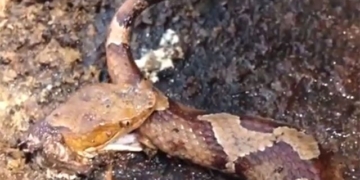The unfortunate hummingbird was devoured by a seemingly innocent praying mantis, shocking all who witnessed the event.
The video capturing the scene of the mantis hanging upside down on a branch, holding the bird with its front legs and biting its head, was shared by Reddit user u/SNAKES_ON_A_PLATE in a backyard in August 2022.
One user commented on the video post: “The mantis seems to prefer starting with the eyeballs of its prey – it’s brutal to watch”, while another remarked “Damn nature, you’re scary!”
There are approximately 2,400 species of mantises, and the name “praying mantis” is often used to refer to many species. The European mantis, which is also found throughout the United States, is the species most people associate with the term praying mantis. These are some of the largest mantises, growing up to about 8.89 cm in length for the largest females and 6.8 cm for the longest males.
Most mantis species are ambush predators that attack unsuspecting prey. The European mantis and other larger species not only attack insects but also prey on their own kind, and even vertebrates such as frogs, lizards, fish, and birds. A 2017 article in the Wilson Journal of Ornithology reported 147 instances of birds being attacked by mantises across 13 different countries on all continents except Antarctica.

A mantis hanging upside down on a branch, holding a bird with its front legs.
Since hummingbirds are among the smallest bird species, they often become targets for mantises. The attacks and feeding methods of mantises on hummingbirds are often extremely brutal. According to National Geographic, these predators will puncture the chest or feed directly from the heads of the birds. Some even decapitate, skin the heads, or pluck the feathers off.
Kevin McGowan, a hummingbird researcher at the Cornell Laboratory of Ornithology, told National Geographic: “Hummingbirds are very small, weighing only 5 or 6 grams.” This means that due to their similar size, they are the type of bird that mantises can easily catch. Other avian targets for mantises include starlings, nectar feeders, flycatchers, and European robins.
Of course, most birds try to escape, but very few succeed. The Wilson Journal of Ornithology states that only 2% of birds escape without human assistance.
Additionally, mantises exhibit a more gruesome habit: cannibalism.
About 25 to 30% of the time, a female mantis will kill and eat the male after or during mating. The reason for this behavior has not yet been fully explained, although some theories suggest that the male provides nutritional benefits to the female to enhance her chances of survival.


















































